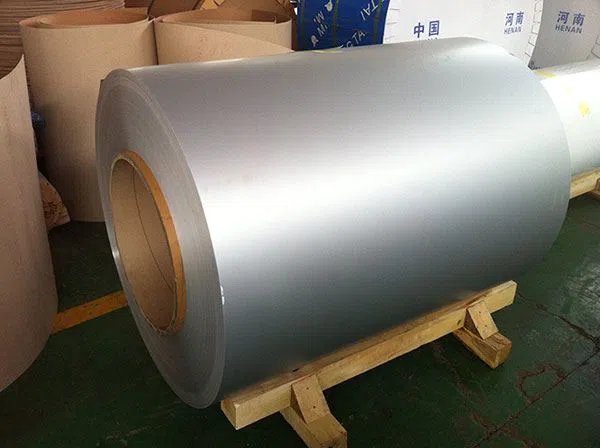The aluminium foil manufacturing process is not so simple as you might think. It consists of one melting and three rolling steps. Details are as below:

Smelting
Aluminium ingot blocks are melted into liquid by large capacity drop heat smelting furnaces, and the aluminium liquid enters the casting mill through the launder, in the process of which the refiner a1-ti-b is added online to form a continuous and uniform refining effect. The graphite rotor is degassed and slag removed Online at 730-735 ℃ to form a continuous and uniform cleaning effect.
Rough Rolling
Aluminium blanks around 7mm thick are obtained in the process of rough rolling, the first rolling step in aluminium foil manufacturing process. The aluminium liquid gets into the casting machine in which the temperature of the cooling water in the inner cavity of the roll body is controlled below 20 and 23 degree centigrade, and that of the outlet water between 28 and 32 ℃. In this process the static pressure of the aluminum melt between the rolls is kept at 0.004 or 0.005mpa, so as to ensure that the crystal direction of the blanks is more than 95% and the grain size less than 5um.
Medium Rolling
Medium rolling stands between rough rolling and foil rolling. The aluminium foil blanks are rolled again by cold rolling mill until their thickness is reduced to 4.5mm, when they are sent into annealing furnace of temperature 360 ℃. Two hours later, the furnace is heated up to 580 ℃, and the blanks are held for 18 hours for homogenization annealing. In this way the grain size of the blanks gets uniform. Another rolling in the cold rolling mill is carried out, during which the foil gets thinner, less than 1mm thick. Then the foil blanks are annealed in the furnace of given temperatures in set time periods again. Eventually they reach 0.3mm thick at the end of this step.
Foil Rolling
The foil gets thinner in a four roller irreversible foil rolling mill. Final thickness of the foil ranges between only 0.006mm to 0.2mm, mostly less than 0.1mm based on their varied uses.
The process above is called cold rolling aluminium foil manufacturing process. In comparison to traditional hot rolling process, it saves both time and cost. What's more, the quality of even the thinnest foil by this process can compete with hot-rolled aluminum foil rolls. Many aluminum foil manufacturers in China adopt this process nowadays.
The production process of the ultra-thin aluminum foil is short in cost, low in production investment and small in scale, and the quality of the ultra-thin aluminum foil produced can reach the most advanced level in the world, compared with the hot rolling production process, the cost of investment in the production of billets can be reduced by more than half.




QR Code
